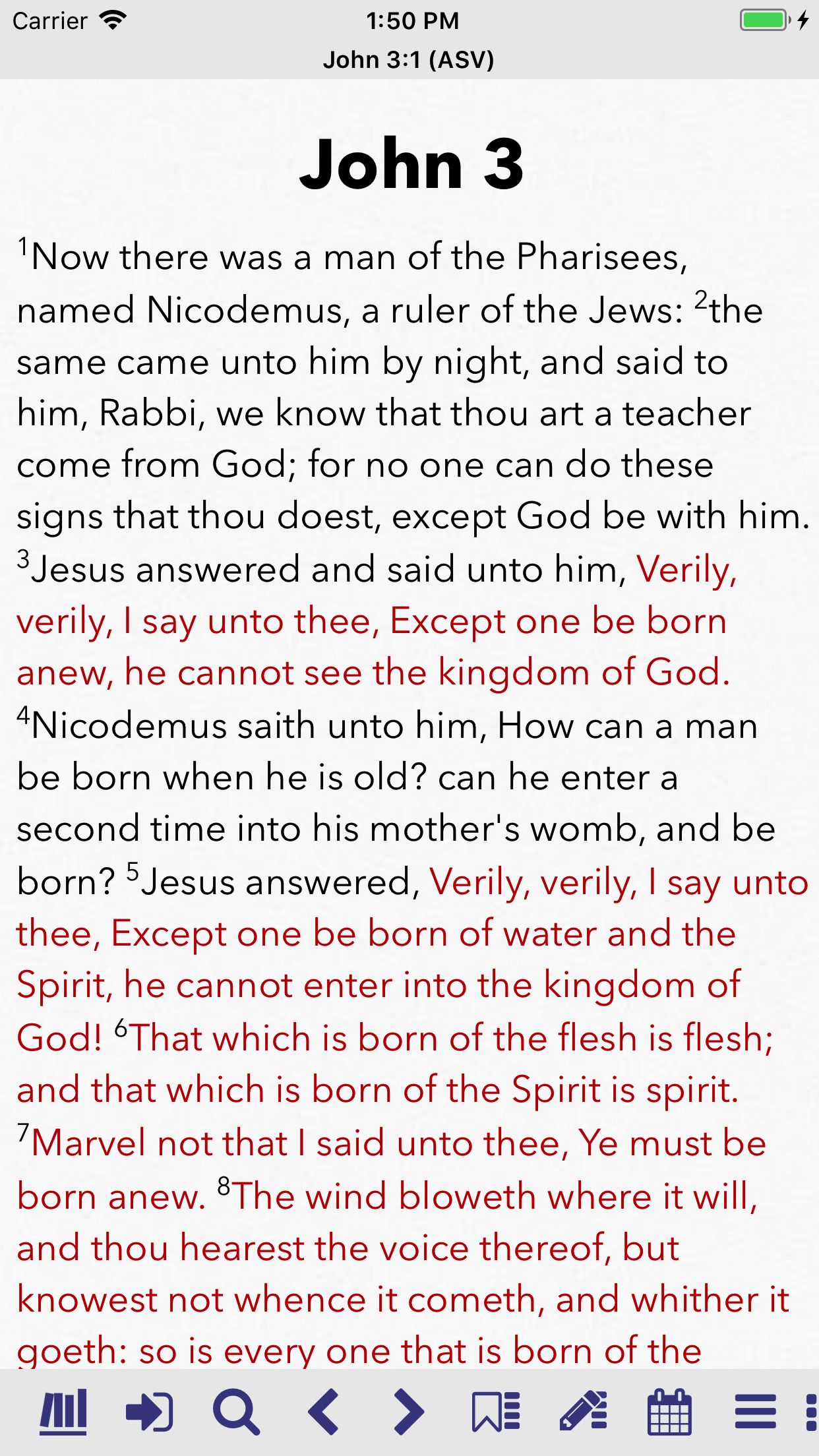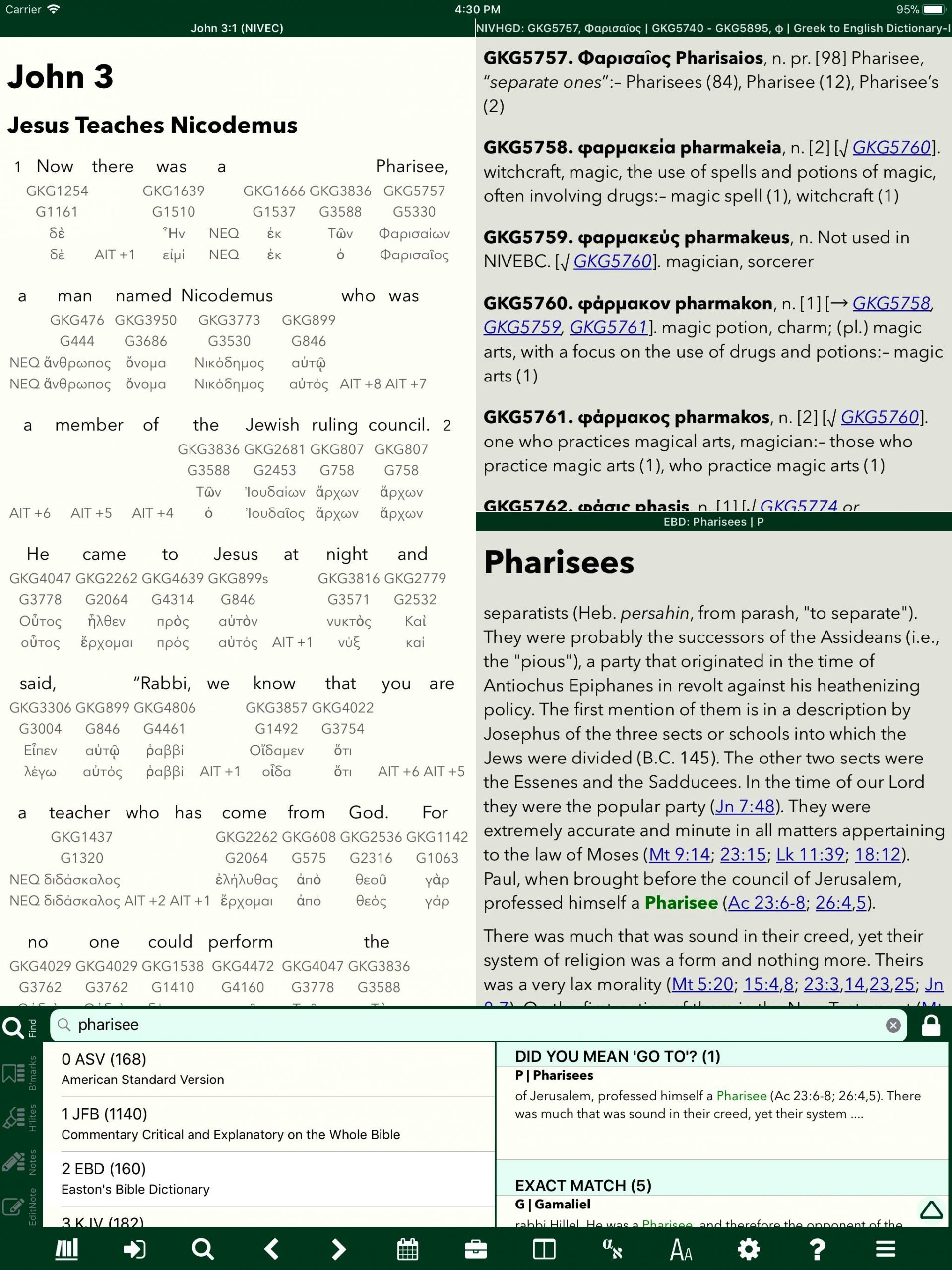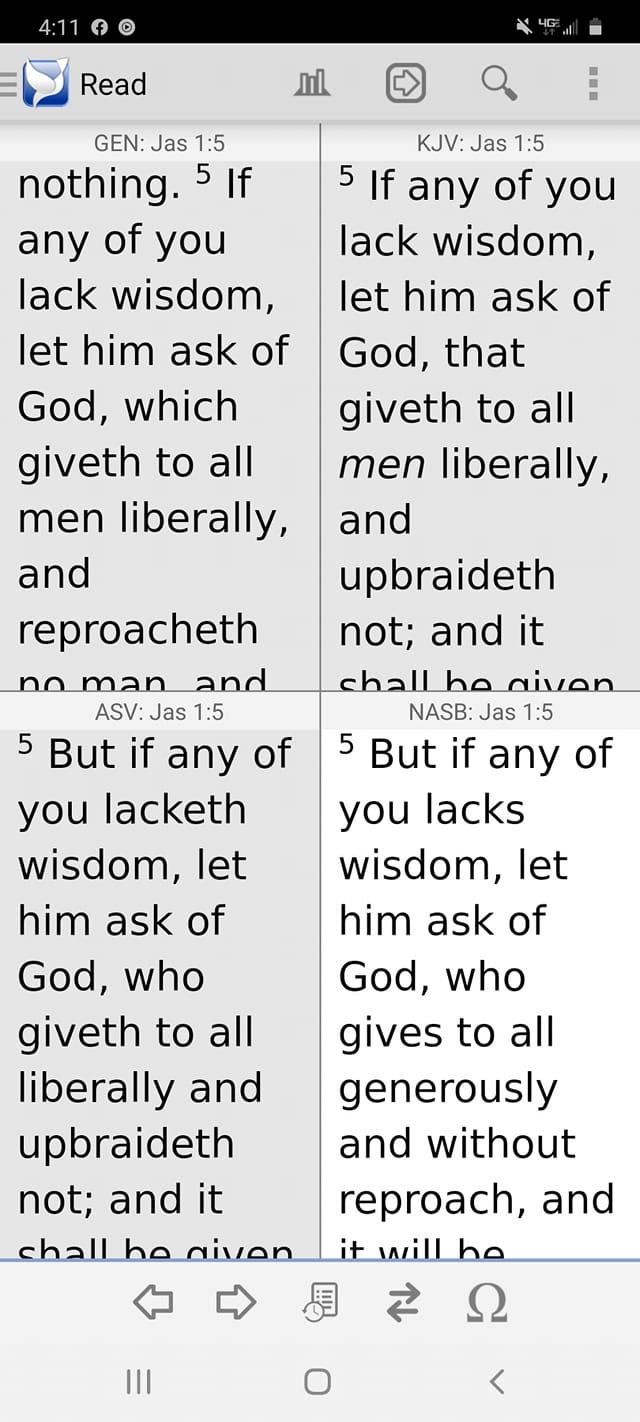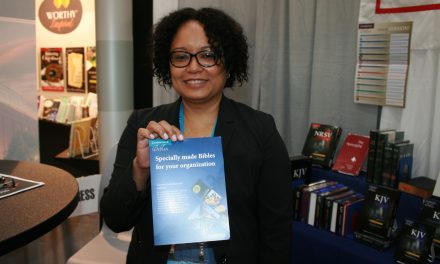I’m a fan of Bible software for desktop and mobile devices. One of my favorites is a mobile app called PocketBible from Laridian. I’ve used PocketBible for almost 20 years, but its history goes back even further than that. I recently got the chance to interview Craig Rairdin from Laridian and learn the fascinating story behind PocketBible.
Introduce yourself to our audience
I am the President and a co-founder of Laridian. I’m the author of Laridian’s PocketBible Bible Study App for iOS, Android, Mac OS, and Windows. Prior to starting Laridian in 1998, I wrote the original QuickVerse Bible software in 1988 and took that to Parsons Technology where I founded Parsons’ Church Software Division. So I’ve been actively involved in writing and marketing Bible software for over 30 years.
On the personal side, I’m married and have 5 adult children and 9 grandchildren. My wife and I were both saved as students at the University of Iowa; she while studying Elementary and Special Education and I as a Computer Science major with an emphasis on Business Administration. We met through a campus ministry, Campus Bible Fellowship. We (or I should say, she) home-schooled all our kids; the first 2 through high school and the rest through 8th or 9th grade. By that time, we were attending a church with its own Christian school, so we enrolled them there.
I’m a barefoot/minimalist runner (Vibram FiveFingers shoes). I run about 20-25 miles per week. I’ve run a half dozen half marathons (13.1 miles).
I live a low-carb lifestyle. No sugar, no grains/flour, and no potatoes. The average person consumes about 300 grams of net carbs per day; I eat less than 30 grams.
I’m a private pilot with single- and multi-engine instrument ratings. I’ve owned a Beech A36 Bonanza (single-engine) and a Beech 58P Baron (twin-engine), but my current airplane is a Jabiru J250-SP light-sport airplane that seats two people and flies low (up to 10,000’ AGL) and slow (130 MPH). I own that with my dad, who got his pilot’s license at age 68. While I’ve regularly flown my bigger airplanes into O’Hare, Hartsfield, and DFW, dad and I have had more fun flying the little airplane to landings in all 48 contiguous states.
As far as hobbies, I enjoy reading and listening to audio books. I’m a relatively inactive ham radio operator (NZ0R). And I’m probably the world’s most prolific collector of Sunbeam Radiant Control toasters from the 1950’s-1980’s.
What is Laridian and PocketBible software?
Laridian is the company I started in 1998 with two of my co-workers (Jeff Wheeler and Jim VanDuzer) from Parsons Technology. In the time since I had written QuickVerse and brought it to Parsons Technology in 1988, the company had been purchased by Intuit (1994), Broderbund (1997), and The Learning Company (1998). Before the TLC acquisition, Jeff and I proposed doing a mobile version of QuickVerse for Windows CE, but the idea was shot down. When things got stupid under TLC, we left and started Laridian for the purpose of creating mobile Bible software.
Laridian began as a truly virtual corporation. The three of us worked from home. There was no office or warehouse. Even though we eventually rented office space in 2011, working from home, the café down the street, the library, or a coffee shop has always been in the Laridian DNA. This has also allowed us to have employees and contractors working literally anywhere in the world and still feel a part of Laridian. At one time I had employees in Washington, Iowa, Missouri, Pennsylvania, and South Carolina. We’ve always been a mix of full-time employees, part-time employees, part-time contractors, and independent developers. I don’t think we’ve ever had more than about 10 of us at any one time.
Our core group of 3 founders was diminished by 1 when Jim left in 2009 to take a full-time position at his church. It was reduced to just me when Jeff died of cancer in 2012. I’ve since taken on a new co-owner and an all new crew of employees and contractors. Most of us are local, but not all of us work at the office.
PocketBible is the Bible study app we created back in 1998. It was originally called PalmBible, but Palm, Inc. threatened to sue us (and everyone else using “palm” in the name of their mobile apps, including those that ran on Palm OS devices) if we didn’t change it. While Microsoft was marketing a device called Pocket PC at the time, they made no similar claim on the word “pocket”. So “PocketBible” became the new name of our app.
The original PocketBible ran on all the flavors of Windows CE (Handheld PC, Handheld PC Pro, Palm-size PC, Windows Mobile, Windows Mobile Smartphone, and Pocket PC).
For Palm OS we licensed an app called Scripture and changed its name to MyBible. Eventually we ported a large percentage of the code for PocketBible into MyBible. Then we ported the PocketBible code to Windows, iPhone, Android, and Mac OS to create apps for those platforms.
What sets PocketBible apart from its competition?
The main thing that sets PocketBible apart is what it is not. Unlike most of the name-brand mobile Bible apps on the market, PocketBible for Android and iOS are not stripped-down versions of a bloated desktop version. Laridian’s raison d’être was and is to create mobile Bible software.
In addition, unlike most of the other mobile-first Bible apps on the market, PocketBible is not the product of a first-time app developer with an aptitude for programming and a copy of the KJV text. We had almost 20 years of programming experience and over 10 years of experience in the desktop Bible software world before writing PocketBible.
Our background gave us unique advantages. While we were writing for mobile devices, we were doing so with desktop sensibilities. Because we were writing for mobile devices, the user interface was kept simple. Operations such as searching are highly optimized because they have to be fast while running on slower mobile processors. And PocketBible has always been extremely memory efficient (both in its runtime usage and in its file storage footprint) due to the relatively limited amount of storage available on mobile devices. Because the desktop versions of PocketBible came after their mobile counterparts, our desktop apps inherit the efficiency that was a requirement when running on devices with less memory, smaller screens, and slower processors.
Furthermore, we came into the market with existing personal relationships with the best Christian publishers. So while other mobile app developers were stuck with “classic” public domain content like the KJV and Matthew Henry’s Commentary, our very first releases included the NIV, NASB, Unger’s Bible Dictionary, Unger’s Bible Handbook, and the Bible Knowledge Commentary.
At Parsons Technology we had emphasized developing Bible software that gave the user access not just to the Bible, but to 20 centuries of scholarship in the form of a library of commentaries, dictionaries and encyclopedias, atlases, and other resources. We didn’t realize that bringing this point-of-view to the mobile world would set us apart, but even today one of the more popular Bible apps for iOS and Android offers the Bible in many languages but not any Bible reference books to go with it.
Because every version of PocketBible is a native app built on a common code base, when you purchase a book for one platform, you can use it on all the others — both those available now and those yet to be invented in the future.
There are other unique aspects of PocketBible that are more philosophical than programmatical. For example, the most popular mobile Bible apps focus more on “enhancing your experience of God in your faith community” than they do on giving you access to reference material to enhance your understanding of God’s Word. They give you the Bible, we give you the Bible plus a library of commentaries, original language material, and encyclopedic references. They give you ways of posting to Facebook a picture of a sunset with a Bible verse on it; we give you ways of automatically collecting information on a passage from your entire library of reference books and pasting it into your lesson notes.
PocketBible is designed for the 99% of us who aren’t Bible scholars. We have some Greek and Hebrew resources but it’s not where our focus is at. We figure most of you don’t know Greek and Hebrew anyway, so you’d rather read what someone who does know Greek and Hebrew says about a verse than try to do it yourself.
What are the most popular products for PocketBible?
I wouldn’t normally publish this info but I’m feeling uninhibited today. These are the top 10 in each category, but in alphabetical order.
Bibles
- Amplified Bible (AMP)
- Christian Standard Bible (CSB)
- English Standard Version (ESV)
- NASB with Strong’s Numbers and Grk/Heb Dict
- New American Standard Bible (NASB)
- New International Version (NIV)
- New King James Version (NKJV)
- New Living Translation, Second Edition (NLTse)
- The Message (MSG)
- The Passion Translation (TPT)
Commentaries
- Believers Bible Commentary
- Bible Knowledge Commentary
- ESV Study Bible Notes
- Life Application Study Bible Notes
- MacArthur Study Bible Notes
- Moody Bible Commentary
- NIV Study Bible Notes
- Reformation Study Bible Notes
- Ryrie Study Bible Notes
- Wiersbe Bible Commentaries
Dictionaries
- A-to-Z Guide to Biblical Prophecy and End Times
- Complete Word Study Dictionaries with KJV
- International Standard Bible Encyclopedia
- Laridian English Dictionary
- New Strong’s Dictionary of Hebrew and Greek Words
- New Unger’s Bible Dictionary
- Pocket Dictionary for the Study of Biblical Hebrew
- Pocket History of Theology
- Vines Complete Expository Dictionary of OT/NT Word
- Where to Find it in the Bible
Devotionals
- A Word for the Day
- By Faith Alone
- Courageous Faith
- Drawing Near
- Experiencing God Day-By-Day
- Harmony Bible Reading Plan
- My Utmost for His Highest
- One Year Book of Psalms
- One Year Chronological Bible
- One Year with Jesus
Other Books
- America’s Founding Documents
- Bible Book by Book
- Book of Common Prayer (1979)
- Concise Theology: A Guide to Historic Christian Beliefs
- Deluxe Bible Maps and Timelines
- Laridian Book of Classic Hymns
- New Illustrated Manners and Customs of the Bible
- The Origin of the Bible
- The Trail of Blood
- Too Busy Not To Pray
Which products do you recommend the most or are your favorites?
One of the ideas of which I’ve been disabused after being in this business for as long as I have is that there is one translation of the Bible that is better than the others — or even one that is “better for me”. I was a KJV, NASB, and NIV guy for a long time, but lately I’ve been picking a translation and reading it cover-to-cover and I’ve found that there’s nothing special about my “favorites”. In fact there are aspects of some newer translations I like better. For example, I’ve found I prefer a Bible that uses Yahweh for the name of God instead of the traditional LORD in all caps. Of course your preferences are going to be different and I’m completely fine with that.
As far as reference books go, I do have some favorites:
- The Complete Word Study Dictionaries. These are “Strong’s number” dictionaries that have more extensive definitions of each Greek and Hebrew word than you’ll find in other similar dictionaries.
- Keil and Delitzsch Commentary on the Old Testament. Once you get past the incredibly technical treatment of every Hebrew word in the verse, this commentary often has insights and connections that I don’t find in every Old Testament commentary.
- Vincent’s Word Studies in the New Testament or Robertson’s Word Pictures in the New Testament. The latter is an update of the former; both have valuable insight into the meanings of the Greek text behind our English translation of the NT.
- The Expositor’s Bible Commentary from Zondervan. (Not to be confused with Nicoll’s The Expositor’s Bible, which is not a Bible, but rather is an expository commentary, and which is also good.) I always have to apologize for this recommendation, since it’s one of the most expensive sets of commentary that we offer. And because of the extremely high royalties, you can’t always get it on sale. But it’s a really nice commentary. It always seems to cover the points of view I see in other commentaries without necessarily picking a favorite interpretation.
- The Moody Bible Commentary manages to pack a lot of content into a single volume. This is the only book we’ve ever published where the editor who worked on it asked if she could keep the printed copy for her personal library when she was done. As far as compact, single-volume commentaries go, this one is a favorite.
- Understanding the Bible series is a recent release that emphasizes reading the Bible in its historical, cultural, and geographical context. It provides background information to inform your Bible study without injecting its own belief system or interpretation.
How is PocketBible used the most?
A lot of people use it for just quickly looking up verses or following along during a sermon.
Compared to other Bible software, PocketBible tends to be used more by the people in the pews — maybe Sunday School and small group leaders —than by pastors and preachers. For a lot of them, it’s their first exposure to things like Strong’s numbers and even the original languages of the Bible. I like this. I like to think we’re taking everyone’s understanding of and interaction with the Bible up a notch, no matter what notch they start on. You may have never read any Bible translation other than the one they use in your church. PocketBible makes it easy to try another. You may know enough Greek to recognize it when you see it. PocketBible gives you a number of Greek New Testaments and lexicons.
What are some unique ways you’ve seen customers use PocketBible?
- Changing the PocketBible logo and name on their launch screen in order to smuggle the Bible into a Muslim country.
- Using the synthesized audio feature to have the app read the Bible to them while they run or bike.
- Buying an old Windows CE or Palm OS device on eBay and installing one of the original versions of PalmBible or MyBible on it.
- Buying PocketBible books and Bibles and trying to use them in other apps. 🙂
What is your favorite way to use PocketBible?
PocketBible has always had features to make it easy to read through the Bible and to keep track of your progress. I use it for daily Bible reading. One of the features in the Advanced Feature Set in PocketBible for iOS, Mac, and Android is called Autostudy Today. It provides a way to export your reading plan and the Bible text you need to read today into a file you can print out or take with you. A couple years ago I spent some time really tweaking all the font sizes and colors to get this to output some really readable, good-looking text. Sounds weird, but it made reading through the Bible a lot more enjoyable.
A lot of my use of PocketBible is note-taking in church. I normally take my iPad with me to take notes during the sermon but sometimes I’ll take my MacBook. Either way, I have complete access to my library while taking notes. This frequently leads to seeing something in a commentary that brings out a slightly different point or takes a different perspective on a passage than what I’m hearing from the pulpit. I can flag it and follow up on it later.
And unfortunately, even when I’m “off the clock” every use of PocketBible is “work” for me. I keep a Journal note in PocketBible where I can make a quick note of bugs or new feature ideas. A couple of the enhancements in the latest iOS release were the result of me trying to use the program myself and realizing “this could be a lot simpler if….”.
You’ve just started a new project for Windows. What can you tell us about that?
Through a series of circumstances described here we ended up with two versions of PocketBible for Windows — an older version designed for Windows XP and a newer version that is not an upgrade to the older version, but rather is an entirely separate program, designed for Windows 8.
For different reasons, neither of these versions of PocketBible can be easily updated and they are definitely showing their age. We’ve spent a lot of time trying to figure out the best way to go about producing a version of PocketBible for Windows that will do everything we need it to do, and finally think we’ve got that figured out. In August and September of 2020, we ran a crowd-funding campaign to raise the cash we needed for the project and at the time of this writing are just getting started.
The new version of PocketBible will draw a lot of user experience inspiration from our Mac OS and iPad versions. That’s not to say it will work just like those products nor will it share any user interface code from those versions. Just that there are concepts that will carry over.
The code that went into the older PocketBible for Windows Desktop (the Windows XP version) eventually found its way into PocketBible for iOS and Mac OS and has been updated and maintained as a part of those products even though it couldn’t be rolled back into the old Windows Desktop version. We’ll build the guts of PocketBible for Windows — the parts that do all the heavy lifting — from that code base.
We’re not taking anything from the current Windows Store version of the app. It was developed by an outside developer and departed a little bit from the way we like to do things. This version will fix all that by not trying to fix it but instead doing something completely different.
The new version should support the same basic features as you find in the Mac OS, Android, and iOS versions of PocketBible and have the same core group of features in its Advanced Feature Set. It will eliminate the incompatibility that the current Windows versions have with certain of our Bibles. It will read the same binary LBK (Laridian Book) file format as all the other versions of PocketBible.
We ran a similar crowd-funding campaign to finance our Mac OS project in 2013. Just like we did back then, we’ll be posting regular progress updates to our backers. Most of those updates will be for backers only. The rest will be public. We’ll post some video demos along the way as we did before. One thing different this time is we’re planning on some live-streaming updates to allow people to ask questions.
Are there any other Laridian projects can you tell us about?
We do our best not to talk about what may or may not be under development here, but here are some tidbits….
The new Windows version of PocketBible is being built on a technology that will give us some interesting possibilities in the future. We’re not committing to or even talking about those at this point. Suffice to say that there’s more to this project than meets the eye.
You can expect to see a new version of the Laridian website in the relatively near future. We’re taking what I think is a unique approach to how that is implemented, but that won’t be of interest to anyone other than other Web developers. I’ll probably blog about those details when the time is right.
We’re looking at how we might automate some enhancements to a few existing Bibles to make them more powerful within the PocketBible ecosystem. To date this has been a torturously manual and expensive process. If we can at least semi-automate it, it will make it affordable enough to actually do.
How can our audience learn more about Laridian and PocketBible?
Visit our website at https://laridian.com. Like us on Facebook: @PocketBible. Contact us at support@laridian.com. Contact me directly at craigr@laridian.com.
Randy’s Conclusion
I’d like to thank Mr. Rairdin for this interview and for the work he’s done in Bible software publishing. He’s provided an amazing list of products and use-cases for PocketBible that are perfect for everyday use. I personally use PocketBible for Android and my Fire tablets and I’m looking forward to seeing the new Windows version.
PocketBible is my oldest favorite Bible app and it’s excellent for reading, study, sermon prep, preaching and teaching, and a lot more. My favorite way to use it is with the Advanced Feature Set using the journal. I develop sermons and teaching points, view them in split-screen with the Bible on one side and the notes on the other, and then preach from that. Clicking on any verse takes me to that verse. Another of my favorites uses is to compare translations in split-screen. Oh, and auto-scroll for reading. And… well.. just download PocketBible and try it for yourself. You’ll see why I think it’s one of the best apps available.















I 100% concur with your assessment! Though reading this article I only learned the top used books. I knew everything else. You and I use PocketBible nearly identically. Although I’m not yet a pastor, I’m seeking a position and this Sunday I’m preaching at a church that’s seeking a pastor. My iPad will have the journal up with my sermon notes.
Congratulations! We’ll keep you in prayer.
Good luck!
Love using the Laridian Bible products in many forms! All dating back to my first experience on a Palm Device (which I still have and Pocket Bible still works on it!
I have used the PC desktop version for years for sermon prep – and is easy nagivation, just type a verse, no opening a search menu! Easy!
And I used the original parsons Bible from v2.0 right up to ver 10 I think when the interface got a bit complex – like you could not read continuously from one chapter to another – but had to hit an arrow to go forward to the next chapter!
Ah, memories. Looking forward to the new Windows version.
Great interview. Used PocketBible and MyBible for a number of years. Currently use Accordance on my iMac and iPhone.
I’ve used Laridian software since my palm pilot days and love it! I’d like to see it easily integrate with some of the newer reader productivity apps like Read-wide to help me extract my notes and highlights.
Thank you for sharing this interview with Craig Rairdin from Laridian Bible Software! It was really informative and helpful in understanding the Bible buying guide. I found it interesting that he emphasized the importance of selecting a Bible that is easy to read and understand. As someone who is new to Bible reading, I have found that this is definitely a key factor for me. I’ll definitely be considering Laridian’s Bibles in my search for the perfect one. Great post!